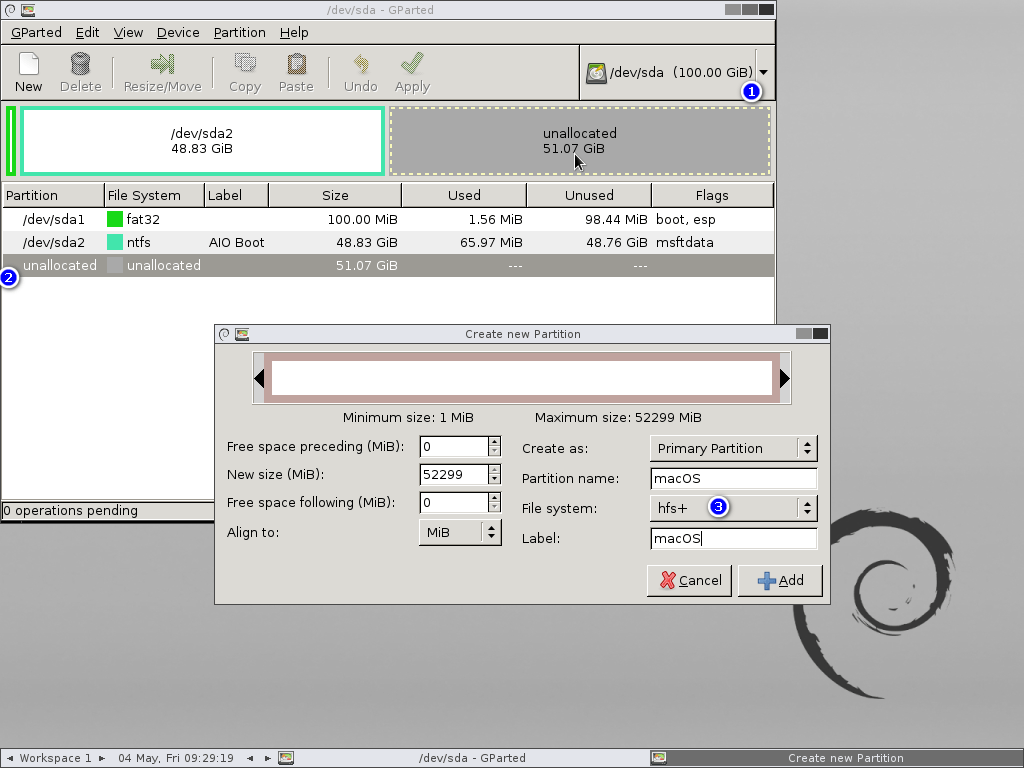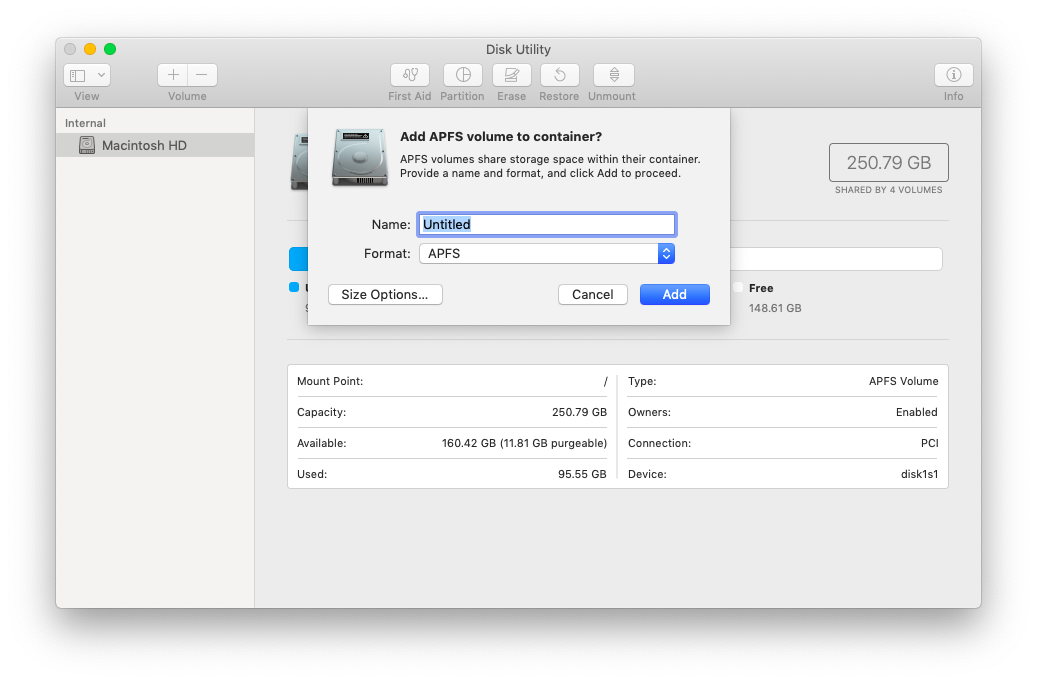Format Flash Drive Mac Os Extended

Are you having trouble creating Mac OS Extended (Journaled) and APFS partitions using Disk Utility? If so, you can create a Mac OS Extended partition using GParted, then convert to APFS using Disk Utility.
Disk Utility
- It’s recommended to use this format whenever you need to use an external drive with OS X only. One interesting feature of OS X Extended is that it is case-sensitive, i.e if you specifically name a file “BeachShot1,” OS X will see that file as different from a similar file named “beachshot1.”.
- Mac OS Extended (Journaled) This format is considered as default file system format of the Mac OS X drives. It also supports OS X Lion, like Versions. This format will allow you to use your flash drive on Mac without any limitations.
- Jul 15, 2020 What's more, it is compatible with SSD and flash storage devices only. Mac OS Extended (Journaled/HFS+): If you didn't update your Mac OS to High Sierra, the default file system on your Mac shoule be Mac OS Extended. Mac OS Extended (encrypted) would be an ideal option if you probably carry your laptop or external drive here and there.

Format an External Disk or Flash Drive for Mac in Maverics Now type a new name for the Volume and select the format type as Mac OS Extended (Journaled). Now click the “Erase” button and confirm again on the next pop-up window to format the External Disk or a Flash Drive for Mac. To format your USB Flash Drive on a Mac: If you use your USB Flash Drive only on a Mac you will want to reformat it to HFS+ (Mac OS Extended (Journal)) which allows larger file sizes. In your Applications folder there is a folder called 'Utilities'. Here you will find an App called 'Disk Utility'. Open it and you will see something like this.
Disk Utility is a disk utility on macOS operating system. It supports creating, splitting, merging, resizing, deleting and formatting partitions on the hard disk. Disk Utility only supports partition creation and formatting for Mac OS Extended (Journaled), exFAT, MS-DOS (FAT) and since MacOS High Sierra (10.13), it supports APFS.
If you are a Linux user or operating systems other than macOS, you probably use another tool. In another case, if you are using a Seagate, WD My Passport or any other hard drive that you previously partitioned with another tool. Disk Utility will report MediaKit reports not enough space on device for requested operation. This error occurs because the partitions created do not comply with Apple’s partition policy. In this case, you can use other tools instead of Disk Utility.
In this article, I will guide you to create a Mac OS Extended (Journaled) partition with GParted. If you want to install macOS High Sierra or later versions, just use the Convert to APFS feature on Disk Utility.
GParted
GParted is a well known disk partitioning program. It supports many partition formats such as FAT32, NTFS, exFAT, Ext4 and of course supports Mac OS Extended. We can use GParted to create Mac OS Extended partitions in just a few simple steps.
GParted comes pre-installed on many Linux distributions like Ubuntu, Debian, Linux Mint… If you already have GParted installed, just use it. If not, you can download GParted or 4MParted ISO files then integrate into AIO Boot. You should use these two operating systems, as they have pre-installed programs that support the format. If you use GParted on Ubuntu, Linux Mint or Debian, you need to install hfsprogs.
The format of Mac OS Extended is HFS+. There are some commercial softwares that support creating HFS + partitions on Windows, but GParted is free. Now we will create the HFS+ partition with GParted.
- Run GParted and select the hard disk in the dropdown list at the top right. My hard disk is /dev/sda.
- You can only create new partitions if your hard disk has unallocated space. Right-click on the unallocated space and select New. You can also format existing partitions to HFS+. Right-click the existing partition, select Format to, and then select hfs+. Or delete the existing partition to recreate it.
- Select hfs+ in the File system. Then select and enter some information for the other items you want.
- Click Add, then click Apply to apply the changes.
The Mac OS Extended partition created by GParted will not be journaled. However, we can use Disk Utility to Enable Journaling. Or use the following command to format Mac OS Extended to Mac OS Extended (Journaled):
/dev/sdaX is the partition you want to format.

Convert to APFS
From the MacOS High Sierra version, Apple announced a new file system called APFS. By default, macOS High Sierra can only be installed on an APFS partition. You can use Disk Utility to convert Mac OS Extended partitions to APFS without losing data.
If the Mac OS Extended partition is not Journaled, please journaled it first. Run Disk Utility, select the Mac OS Extended partition in the left column, then select File and select Enable Journaling.
Now you can convert Mac OS Extended (Journaled) partitions to APFS without losing data. Just select Edit and select Convert to APFS…

By using GParted with the simple steps above, we can easily create Mac OS Extended (Journaled) partitions and many other formats that Disk Utility does not support. If you need to create macOS High Sierra bootable USB from Windows, you can try Clover Boot Disk. Good luck!
Are you sure the SSD is locked? What do you find in Disk Utility? From what are you attempting to reinstall Sierra? Exactly how did you erase the SSD and try reinstalling macOS?
Formatting Flash Drive On Mac
Clean Install of El Capitan or Later on a Clean Disk
Format Flash Drive Mac Os Extended Pro
Format Flash Drive Mac Os Extended Journaled
- Restart the computer. Immediately after the chime hold down the Command-Option-R keys until a globe appears.
- The Utility Menu will appear in from 5-20 minutes. Be patient.
- Select Disk Utility and click on the Continue button.
- When Disk Utility loads select the drive (usually, the out-dented entry) from the side list.
- Click on the Erase tab in Disk Utility's main window. A panel will drop down.
- Set the partition scheme to GUID.
- Set the Format type to Mac OS Extended (Journaled.)
- Click on the Apply button, then click on the Done button when it activates.
- Quit Disk Utility and return to the Utility Menu.
- Select Reinstall OS X and click on the Continue button.
Best Flash Drives For Macs
Format Flash Drive Mac Os Extended Crack
Use Command-Option-Rto install the version of OS X that was currently installed. Use Command-Option-Shift-R to install the original factory version when the computer was new.
Dec 15, 2017 12:41 PM
